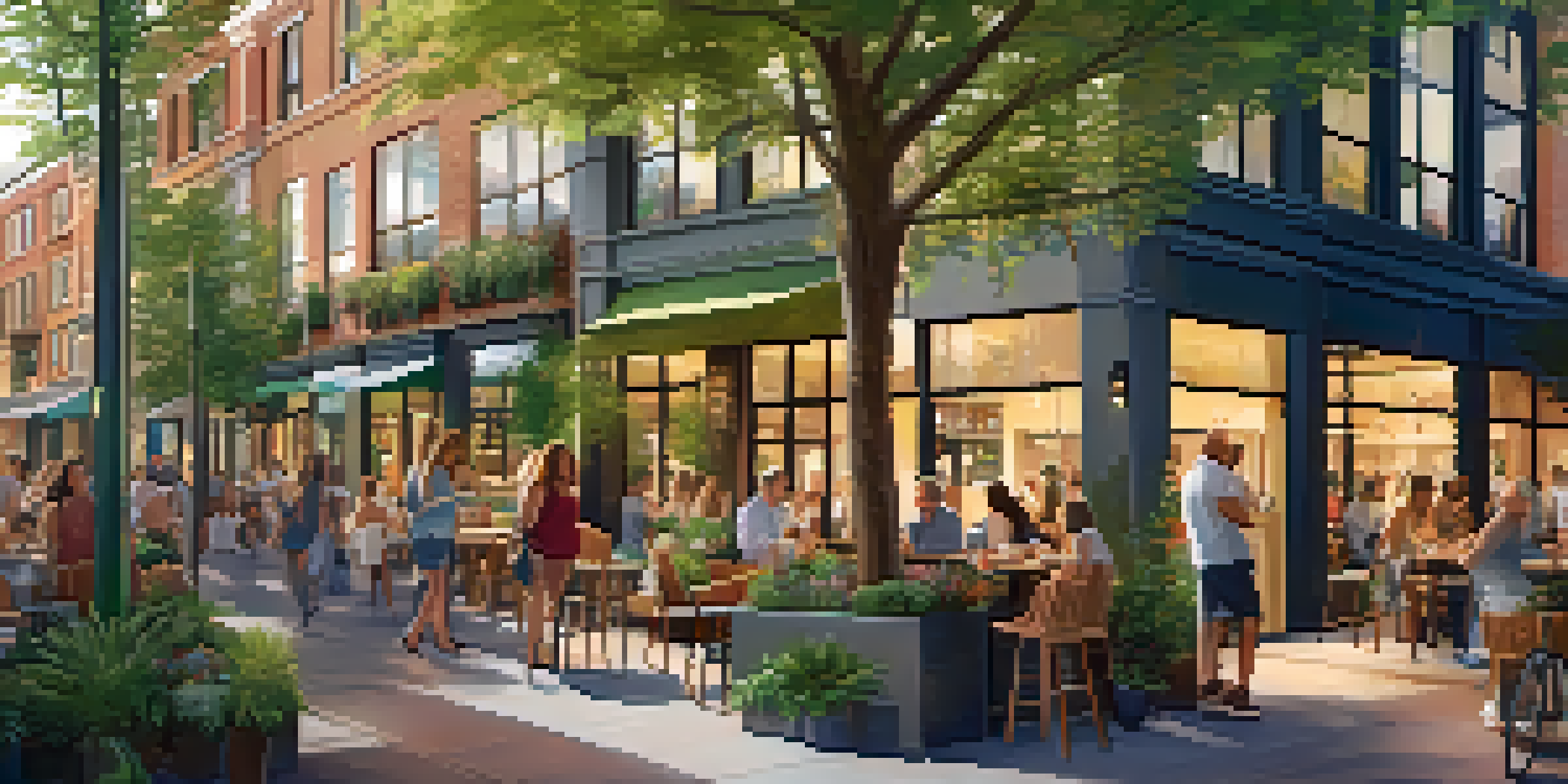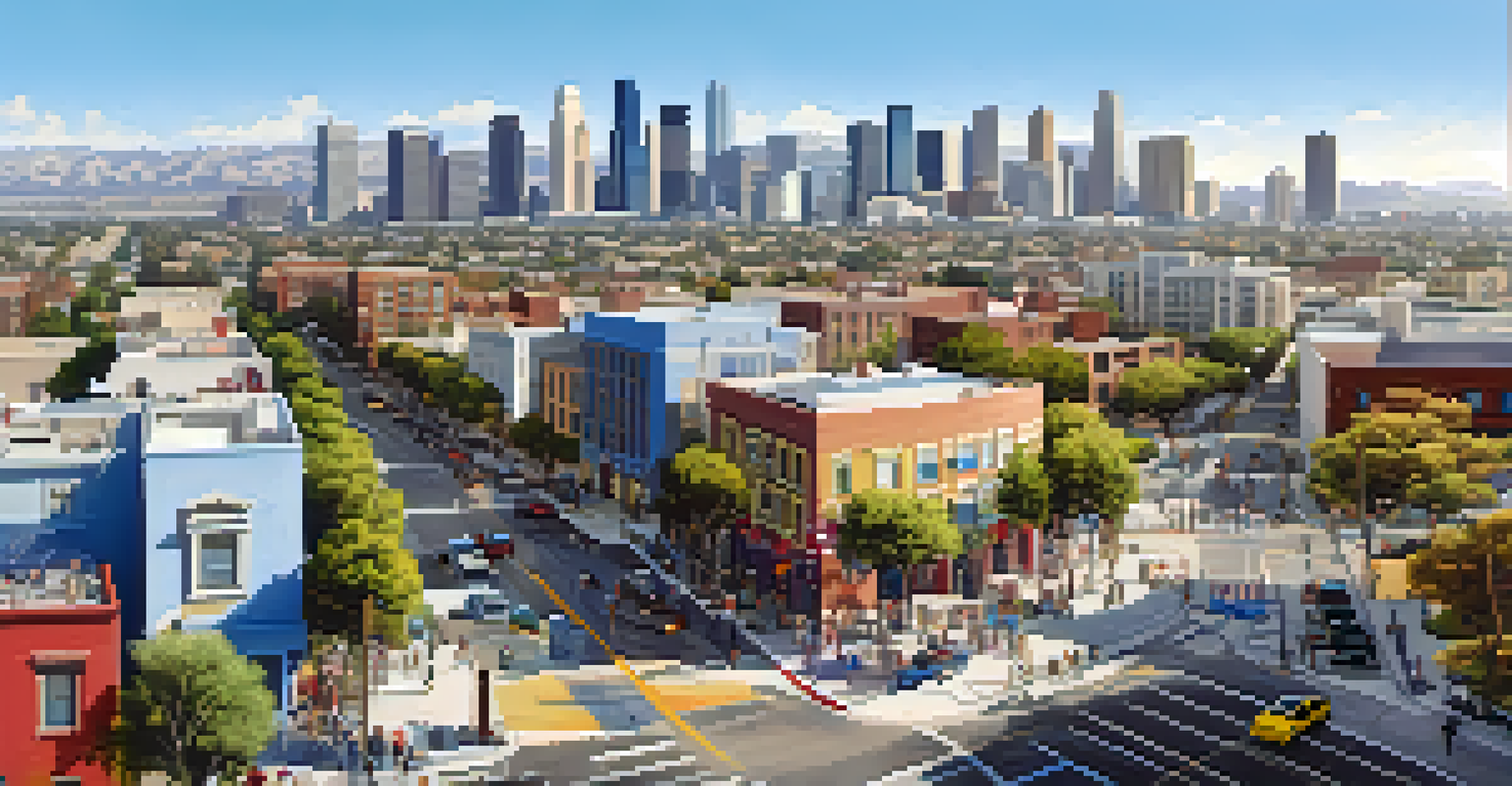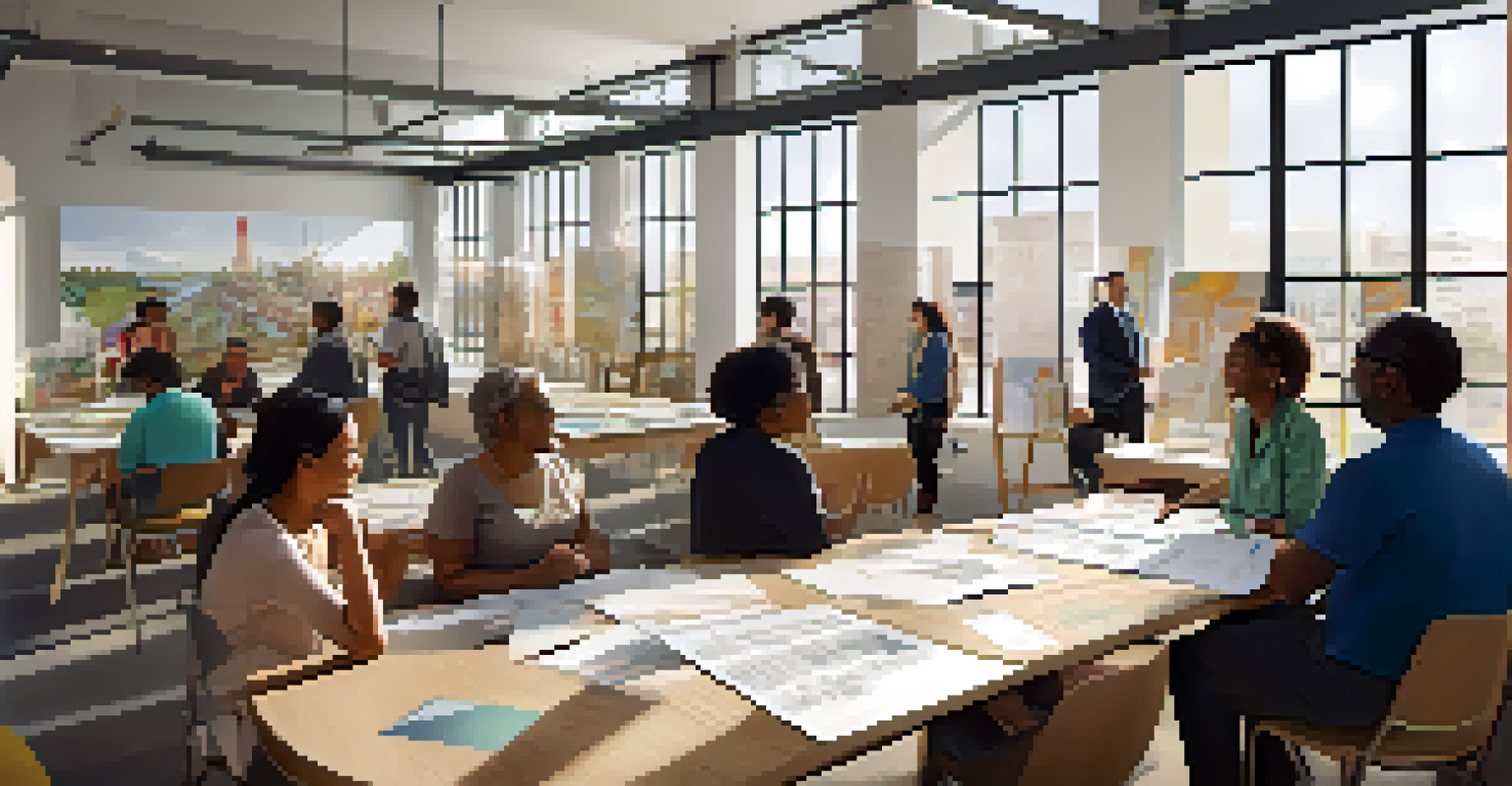The Growing Popularity of Mixed-Use Developments in Los Angeles

What Are Mixed-Use Developments and Their Appeal?
Mixed-use developments combine residential, commercial, and sometimes even recreational spaces into one cohesive area. This blend creates vibrant communities where people can live, work, and play without the need for long commutes. As urban living becomes more desirable, these developments are appealing to city dwellers seeking convenience and a sense of community.
The best way to predict the future is to create it.
Imagine stepping outside your apartment and finding shops, restaurants, and parks just a short walk away. This integrated lifestyle reduces reliance on cars, which can be a game-changer in a sprawling city like Los Angeles. The appeal lies not just in accessibility but also in the opportunity to foster social interactions among residents and visitors alike.
In essence, mixed-use developments cater to the changing dynamics of urban living. As more people prioritize sustainability and convenience, the demand for these spaces continues to grow, reshaping what it means to live in a major city.
Why Los Angeles is Embracing Mixed-Use Developments
Los Angeles has always been a city of dreams, attracting people from all walks of life. However, the challenges of urban sprawl and traffic congestion have prompted city planners to rethink how communities are built. Mixed-use developments offer solutions to these issues by promoting density and reducing the need for extensive travel.

With the city's ongoing efforts to enhance public transportation and reduce carbon footprints, mixed-use spaces align perfectly with these goals. Residents are increasingly looking for neighborhoods that support a more sustainable lifestyle, where they can easily access jobs, entertainment, and essential services without hopping in their cars.
Mixed-Use Developments Explained
These developments combine residential, commercial, and recreational spaces to create vibrant communities.
This shift is not just beneficial for the environment but also enhances the overall quality of life. As more mixed-use projects come to fruition, they promise to transform the urban landscape of Los Angeles, making it a more livable and engaging city.
Key Examples of Successful Mixed-Use Developments
One standout example is the revitalization of the Arts District, where former warehouses have been transformed into trendy lofts and vibrant businesses. This area now thrives with cafes, art galleries, and shops, creating a unique urban experience that attracts both locals and tourists. Such transformations exemplify how mixed-use developments can breathe new life into underutilized spaces.
Community is much more than belonging to something; it's about doing something together that makes belonging matter.
Another notable project is The Grove, a well-known outdoor shopping and entertainment complex. By incorporating residential units alongside retail and dining options, The Grove has become a cultural hotspot in the city, demonstrating the success of mixed-use spaces in fostering community interaction and economic growth.
These examples highlight the versatility of mixed-use developments and their ability to cater to diverse needs. As more projects like these emerge, they pave the way for a more interconnected and vibrant Los Angeles.
The Impact of Mixed-Use Developments on Local Economies
Mixed-use developments can serve as economic engines for their communities. By combining residential and commercial spaces, they create job opportunities and stimulate local businesses. This economic activity leads to increased foot traffic, which benefits shops and services, fostering a thriving local economy.
Moreover, these developments often attract new businesses that cater to the needs of residents. Coffee shops, fitness studios, and grocery stores flourish in these mixed environments, creating a bustling atmosphere that encourages community engagement. The ripple effect of this growth can significantly uplift neighborhoods.
Los Angeles Embraces Change
The city is adopting mixed-use developments to address urban sprawl and promote sustainability.
As more mixed-use developments are built, they contribute to a cycle of economic revitalization. This transformation not only enhances property values but also enriches the quality of life for residents, making these developments a win-win for everyone involved.
Challenges Faced by Mixed-Use Developments
Despite their many advantages, mixed-use developments also face challenges. Zoning laws can complicate the approval process, making it difficult for developers to bring their visions to life. Navigating bureaucratic hurdles can often slow down progress, leading to frustrations for both developers and potential residents.
Additionally, there's the challenge of balancing the diverse needs of different stakeholders. While some may prioritize residential space, others might advocate for more commercial options. Finding the right mix can be tricky, requiring careful planning and community input to ensure that the development serves everyone’s interests.
Ultimately, overcoming these challenges is crucial for the success of mixed-use developments. As more cities, including Los Angeles, embrace this model, it's essential to address these hurdles to fully realize the potential benefits.
The Future of Mixed-Use Developments in Los Angeles
Looking ahead, the future of mixed-use developments in Los Angeles appears promising. As urban populations continue to grow, the demand for integrated living spaces will only increase. City planners and developers are recognizing the importance of creating neighborhoods that foster connection and sustainability.
Innovative designs that prioritize green spaces and community amenities are becoming more common. These developments aim to enhance the overall urban experience, making Los Angeles not just a place to live, but a vibrant community where people feel a sense of belonging.
Community Engagement Matters
Involving residents in the planning of mixed-use projects fosters trust and ensures their needs are met.
As trends evolve, mixed-use developments will likely play a pivotal role in shaping the future of Los Angeles. By embracing this model, the city can continue to thrive, adapting to the needs of its residents while promoting a more sustainable way of living.
Community Engagement in Mixed-Use Development Projects
Community engagement is vital in the successful planning and execution of mixed-use developments. Involving residents in the decision-making process ensures that their needs and preferences are considered, fostering a sense of ownership and belonging. This engagement helps to build trust between developers and the communities they serve.
Workshops, public meetings, and surveys are effective ways to gather input from local residents. By listening to their ideas and concerns, developers can tailor projects to better meet the needs of the community. This collaborative approach not only enhances the design but also promotes a more inclusive urban environment.

As mixed-use developments become more widespread, prioritizing community engagement will be essential. This commitment to collaboration can help create spaces that truly resonate with residents, ensuring their continued success and relevance in the dynamic landscape of Los Angeles.